Hope, colour, and creativity: Local children have helped reimagine Port Talbot with vibrant new murals beneath the M4.
Three vibrant new murals now brighten Ynys Street in Port Talbot, capturing the town’s past, present, and imagined future—through the eyes of over 200 local children.
The artwork, located beneath the M4, is part of The Steeltown Storybook: Children’s Chapter, a creative outreach project led by Swansea University’s Dr Michaela James, Emily Adams, and Jack Palmer.
Prompted by Port Talbot’s industrial transition, Steeltown Storybook invited local primary school pupils aged 7 to 11 to take part in workshops exploring the town’s history, its current identity, and their hopes for the future.
Activities ranged from clay moulding to podcasting and Photovoice—a storytelling method using photography—all designed to empower young people to reflect on their town and their relationship with the local community.
The children’s responses were imaginative, hopeful, and rooted in pride of place, including Aberavon Beach and the bandstand in Taibach Memorial Park.
From dreams of flying cars and steel museums to DJ aliens soundtracking the future, their visions challenge narratives of decline and instead offer a world of possibility.
One child imagined a brighter, more colourful Port Talbot: “We’d like the town to be more vibrant and colourful with painting under bridges and more graffiti projects, we hope that scientists will discover new colours.”
THEW CREW —a collective of local artists—has played a vital role in transforming these ideas into three striking murals.
Ryan Lee Davies and Matthew Cole of THEW CREW said: "As local lads who’ve grown up in the community, we are grateful to have had the opportunity to take the children's ideas and turn them into a piece of art that represents the past, present and future of our town.
“We tried to make the murals as seen through the children's eyes – nice, colourful, and happy, and we really hope everyone enjoys it."
Funded by the Arts and Humanities Research Council (AHRC) Impact Accelerator Account (IAA), the project has enabled the University to bring together schools, artists, and community teams—including Raspberry Creatives, the Think Family Partnership, and Neath Port Talbot Council—to create something that reflects the voices of everyone involved.
Emily Adams, History PhD Candidate and part of the Local Challenges Research Office (LCRO), said: "By centring the voices of young people, this project has challenged dominant narratives about Port Talbot. Headlines sparked by the ongoing industrial transition would suggest a town without hope for the future, but over 200 local children have creatively shown that this is not their reality."
Dr Michaela James, Child Health and Wellbeing Research Officer, said: "The United Nations calls for all children and young people to have a voice on matters that affect them. I think this project is a fantastic example of what we can learn from listening to these voices."
Jack Palmer, Co-Production Officer within HDRUK Wales (Health Data Research UK), said: "This project has been a prime example of citizenship and advocacy among young people in Port Talbot. Their pride and passion for their home is inspiring, and I hope decision-makers take their thoughtful suggestions to heart."
The team has recently secured further AHRC IAA funding to platform local children’s hopes for the future, including ways to reduce pollution, brightening public spaces, and opening more youth clubs.
As well as visiting the murals in person, the public will also be able to get a behind-the-scenes look at the work that inspired their creation during this year’s Being Human Festival—Steeltown Schoolkids exhibition, 7–15 November 2025 at The Art Space on Station Road.
